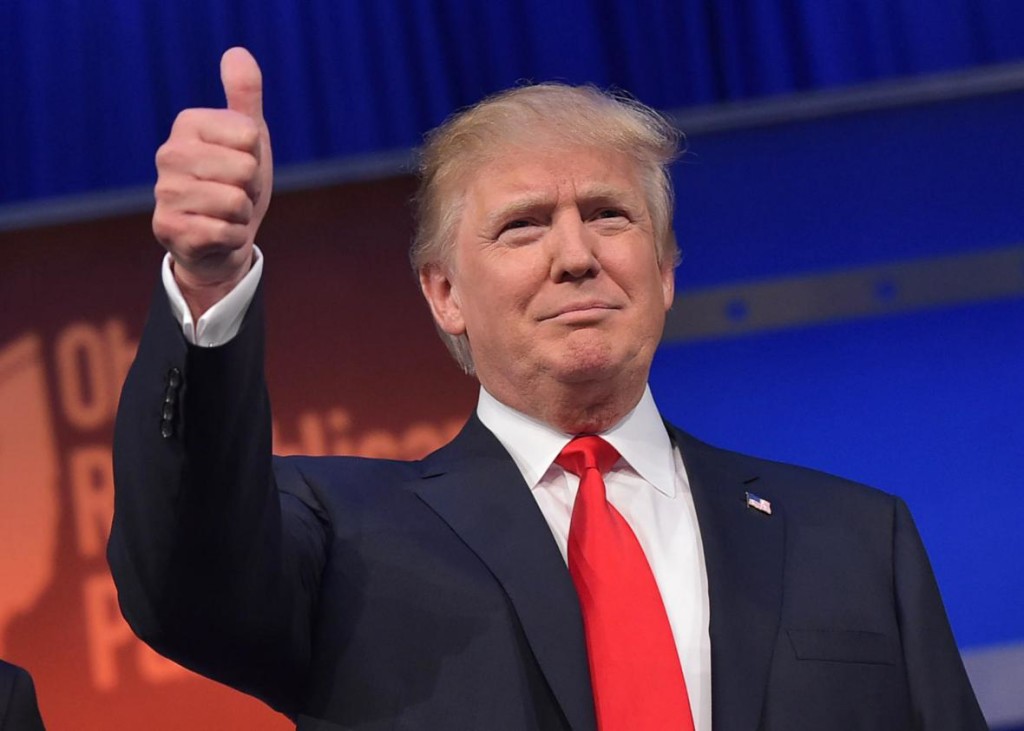This essay is part of our collection “Advice for Donald Trump.” Read related pieces here.
With Donald Trump crashing through to the nomination, leaving casualties all about, Republicans need a contemporary replay of the Declaration of Morningside Heights.
The title may be unfamiliar to many, but it refers to a key moment in American politics in the twentieth century. The Declaration of Morningside Heights was the name given to the announcement made by Dwight Eisenhower and Robert Taft in the aftermath of the heated, abrasive Republican Convention of 1952. It served to unite the Republican party at a moment when liberal and conservative factions threatened to split it apart. Can Trump come to a similar agreement with party leaders and unite the party once again?
The Contentious Convention of 1952
Start your day with Public Discourse
Sign up and get our daily essays sent straight to your inbox.At the Republican convention of 1952, Robert Taft, the Senator from Ohio, represented a conservative wing determined to roll back the New Deal with the first Republican Administration in twenty years. Eisenhower had been brought forward as an alternative centrist candidate. He had the backing of the Eastern, internationalist wing, led by Senator Henry Cabot Lodge of Massachusetts and the irrepressible Thomas Dewey. There were accusations about stealing delegates from Texas, and the hard feelings were sharpened by the closeness of the vote.
People tend to forget that Ike did not actually have the numbers he needed to become the party’s nominee on the first ballot. He led Taft by a count of 595 to 500. But the leaders could see the likely direction of things, and so Minnesota moved to switch its vote on the first ballot from Harold Stassen, the favorite son, to Eisenhower. With that move, the rival candidates folded and joined the motion to make the nomination unanimous. But the disagreements within the party ran deep, and so it was thought necessary to arrange a meeting between Eisenhower and Taft in New York. Eisenhower had been the President of Columbia University, and so the meeting was held in Morningside Heights.
Taft was remarkably free of resentment, quite unlike many of his followers, who were determined not to acquiesce in the takeover of their party by the more liberal wing. The aim of the meeting was to assure Taft’s supporters that a new Republican administration would indeed be a conservative administration.
Taft released a statement that he was “completely satisfied that General Eisenhower will give the country an administration inspired by the Republican principles of continued and expanding liberty for all as against the continued growth of New Deal socialism.” But there was also a separate statement put out later, listing some discrete and telling items. There was an agreement to make the resistance to Communism, at home and abroad, a defining feature of the new administration, along with a serious commitment to scaling down the spending of the federal government and balancing the budget. There was also a promise to “see to it that no treaty or agreement with other countries deprives our citizens of the rights guaranteed them by the Federal Constitution.”
What Would a Modern Morningside Look Like?
Before more Republicans start carrying out their threat to defect or stay home in November, it could be quite useful to have a meeting with people of comparable weight and visibility.
The main rival, taking the role of Taft, would have been Ted Cruz, but Cruz doesn’t have the detachment of Taft, and Trump is not the large-natured man that Eisenhower was. Instead, the figure to complete the scene will be the man who will be meeting with Trump on Thursday. Paul Ryan, along with Mitch McConnell, has taken the lead in shaping and preserving a conservative agenda in Congress. These two promise to be the source of a more distinctly conservative policy if a Trump Administration took office.
Trump has not exactly been Lincolnian in his willingness to expound and explain the substance of his policies. He has left that task to official statements written by his hired hands. This could be the time to speak more clearly in his own voice in a conversation that focuses precisely on the details of his plans—that is, if he can speak to those details. Over the past week, Trump’s statements haven’t done much to help unite the Republican Party. Trump has treated as negotiable and unsettled the positions long settled among Republicans about taxes, entitlements, and the manipulation of the minimum wage by politicians and unions. Nor is it exactly the invitation to a conversation to denounce Paul Ryan, demand his ouster as speaker, and send henchmen out to remove him from his congressional seat. Still, Ryan will know, better than anyone else, whether Trump can speak to the details of his policy. If he cannot, Ryan will tell us.
It would do much to reassure Republicans if Trump could summon the serene confidence of Ike and let people know, in a calm but firm voice, that he has reached an agreement with Ryan on the leading features that would separate his administration from that of Obama-Clinton 3.0. Perhaps such an agreement could include a public avowal of the following points:
– That the naming of a strongly conservative successor to Justice Scalia—and the appointments to lower federal courts—would be one of the highest concerns of the Trump administration. As president, Trump would rely on a panel of former clerks to Justice Scalia to provide the list of candidates upon which he would draw exclusively for that appointment.
– That Obamacare would be repealed and replaced with a scheme far more reliant on the free market, with policies and services bought across the lines of States.
– That Trump would support and sign the measure passed by the House in September to order penalties for people who kill children who survive abortions. One hundred seventy-seven Democrats voted against that bill, and Obama threatened to veto it. Now, Hillary Clinton must be forced to defend their position.
– That there would be a repeal of Dodd-Frank and Sarbanes-Oxley with their crippling burdens of paperwork and administration, which sap the resources of private business to generate investment and create jobs.
– That the administration would reverse the policy of using the leverage of the law to enhance the power of unions, public and private, to extract dues and memberships from unwilling workers.
– That the administration would take up again the traditional authority of the legislative and executive branches to counter and narrow the holdings of the Supreme Court, for the sake of protecting religious freedom against the mandates of Obamacare and the edicts installing same-sex marriage. The administration may act through ordinary legislation to defend marriage as the legal commitment of one man and one woman, and do that in part by barring the recognition of polygamy in federal law and supporting the authority of the states to refuse to recognize polygamous unions.
We can assume that the familiar things will be said about defending the Second Amendment and preserving the holdings of the Supreme Court in the case of Citizens United. No statement of this kind could cover everything. It need say only enough to impart, as Lincoln used to say, “the central idea.”
Dwight Eisenhower was a large enough man to reach out to his political opponent and seek an accommodation for the sake of healing wounds and bringing his party together. If it worked so well for Ike, it may well be worth doing once again.














